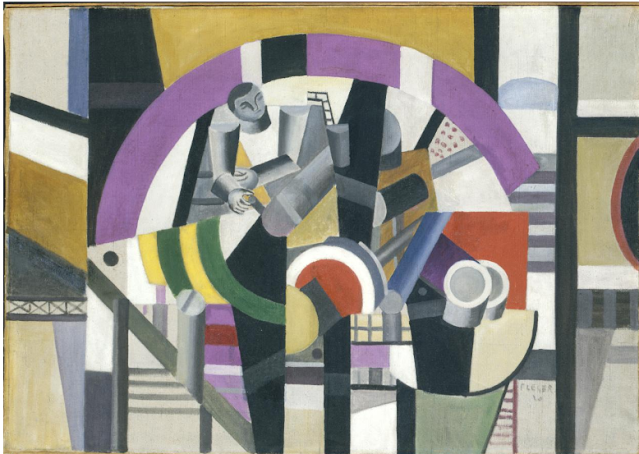George Caleb Bingham, "Canvassing For A Vote"
Bingham was a true American. When he was 8 years old, he and his family moved to Missouri, and established a home on the Missouri River, which was then the eastern terminus of the Santa Fe Trail. I am sure in 1818 this was pretty wild country. As he grew and developed as an artist, his paintings of American frontier life are those best remembered and appreciated today. He did get training as an artist. As a young man he spent time at the Pennsylvania Academy of Art, then later traveled to Paris and Dusseldorf, Germany to study. But the main portion of his life was back in Missouri. When the Civil War broke out Bingham became a Union officer and at its conclusion, started a career in politics, eventually becoming quite successful as a Missouri official. But for all his life, his main source of income was portrait painting.
Our painting for this week shows he must have been interested in politics before his Civil War duties, for here we see the politician running for office. Bingham did a series of three paintings which were titled, The Election Series, but this is not one. Here we have our speaker, leaning into three gentleman and we can only guess at what he is telling them. However the men do seem reasonably engaged. It is only the dog on our left that hints at just a little boredom! Remember Bingham is an accomplished portrait painter, so my guess is these faces are accurate depictions of real people. The man in the center looking out at us, certainly makes me smile. Just because Bingham selected common Missouri folk brings his paintings an honest account of life on the edge of the frontier.
The composition is remarkable, and I won't linger over it. But do see how the painting is divided in half, and how lines meet or point. There could be some symbolism in the rising clouds on the far right horizon. Critics have labeled Bingham a Luminist, because of his ability to naturally and beautifully light his subjects. Here we can almost tell the time of day because of the way the clouds are lit, the shadows and the illumination of the subjects.
Canvassing For A Vote is an oil on canvas. It measures 25" high by 30.5 inches wide. It is the property of the Nelson-Atkins Museum of Art in Kansas City, Missouri.
Make Art a part of your life, it's a beautiful thing to do.




These three contented listeners are quite a contrast to our animated politics of today. It appears that they have a spotlight on them .His paintings do reflect the history and culture of his time .He is an expert at painting groups. His palette is usually quite similar, and he emphasizes with contrast more than bright colors. I particularly liked "The Trappers Return" that we studied one time at WAC, with the black cat sitting at the prow of the boat!! He has a river scene at the Winona Museum. Some of his work includes native Americans but no African Americans. I wondered why, since he did many scenes of Missouri?? (or maybe I missed them) A very interesting and skillful artist.
ReplyDeleteRecently I read that that black animal at the prow of the boat is a cub bear! I was surprised, because it certainly looks like a large cat. Also, we know that Missouri was sort of a dividing line between North and South, Bingham was opposed to slavery, which maybe one reason why he did not paint Black Americans, but hard to say for certain. For this painting, I did think it fun that the painting is a group of "well fed" men at leisure, smoking and chatting outside this place of business.
Delete